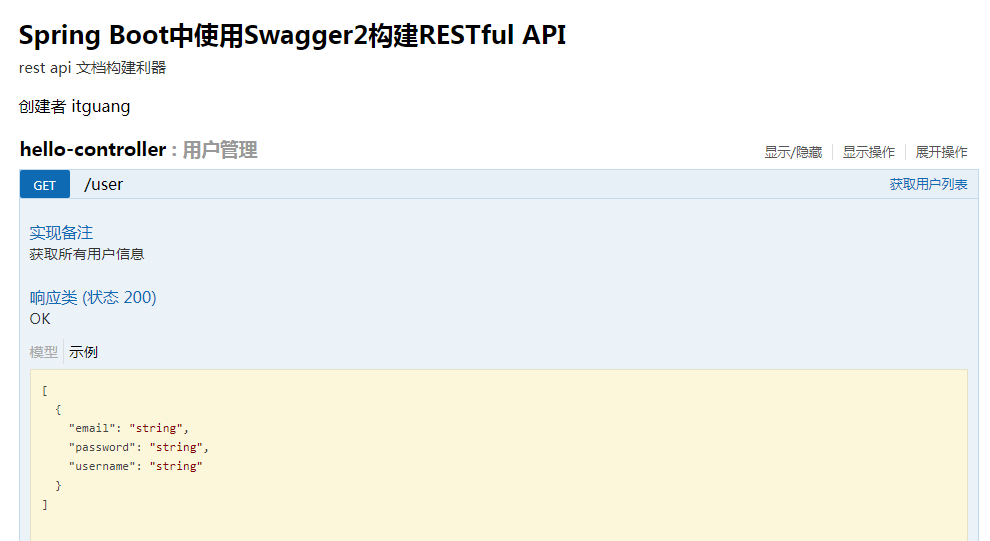发表于: 2018-09-10 22:59:35
1 422
今天完成的事情:(一定要写非常细致的内容,比如说学会了盒子模型,了解了Margin)
一 . mybatis 逆向生成---maven插件
1. maven添加plugin
<!-- mybatis 逆向工程maven工具 -->
<plugin>
<groupId>org.mybatis.generator</groupId>
<artifactId>mybatis-generator-maven-plugin</artifactId>
<version>1.3.2</version>
<dependencies>
<dependency>
<groupId>mysql</groupId>
<artifactId>mysql-connector-java</artifactId>
<version>${mysql.version}</version>
</dependency>
</dependencies>
<configuration>
<!--配置文件的路径-->
<configurationFile>${basedir}/src/main/resources/generatorConfig.xml</configurationFile>
<overwrite>true</overwrite>
</configuration>
</plugin>
</plugins>
2. generatorConfig.xml
<?xml version="1.0" encoding="UTF-8"?>
<!DOCTYPE generatorConfiguration
PUBLIC "-//mybatis.org//DTD MyBatis Generator Configuration 1.0//EN"
"http://mybatis.org/dtd/mybatis-generator-config_1_0.dtd">
<generatorConfiguration>
<context id="test" targetRuntime="MyBatis3">
<!-- 一些工具 -->
<plugin type="org.mybatis.generator.plugins.EqualsHashCodePlugin"></plugin>
<plugin type="org.mybatis.generator.plugins.SerializablePlugin"></plugin>
<plugin type="org.mybatis.generator.plugins.ToStringPlugin"></plugin>
<commentGenerator>
<!-- 插入一个日期字段 -->
<property name="suppressDate" value="true" />
<!-- 注释 -->
<!-- 是否去除自动生成的注释 true:是 : false:否 -->
<property name="suppressAllComments" value="false" />
</commentGenerator>
<!--数据库链接 参数 -->
<jdbcConnection driverClass="com.mysql.jdbc.Driver"
connectionURL="jdbc:mysql://localhost:3306/test"
userId="root"
password="123456">
</jdbcConnection>
<javaTypeResolver>
<!-- 默认false,把JDBC DECIMAL 和 NUMERIC 类型解析为 Integer,
为 true时把JDBC DECIMAL和NUMERIC类型解析为java.math.BigDecimal -->
<!-- This property is used to specify whether MyBatis Generator should
force the use of java.math.BigDecimal for DECIMAL and NUMERIC fields, -->
<property name="forceBigDecimals" value="false" />
</javaTypeResolver>
<!-- 生成模型的包名和位置 -->
<javaModelGenerator targetPackage="com.example.mybatisnixiang.model"
targetProject="src/main/java">
<!-- enableSubPackages:是否让schema作为包的后缀 -->
<property name="enableSubPackages" value="true" />
<!-- 从数据库返回的值被清理前后的空格 -->
<property name="trimStrings" value="true" />
</javaModelGenerator>
<!-- 生成映射文件的包名和位置 -->
<sqlMapGenerator targetPackage="com.example.mybatisnixiang.mappers"
targetProject="src/main/java">
<property name="enableSubPackages" value="true" />
</sqlMapGenerator>
<!-- 生成DAO的包名和位置 -->
<javaClientGenerator type="XMLMAPPER"
targetPackage="com.example.mybatisnixiang.dao" targetProject="src/main/java">
<property name="enableSubPackages" value="true" />
</javaClientGenerator>
<!-- 要生成哪些表 -->
<!--tableName写表名,domainObjectName写实体类的名称-->
<table tableName="taskone" domainObjectName="User"
enableCountByExample="false" enableUpdateByExample="false"
enableDeleteByExample="false" enableSelectByExample="false"
selectByExampleQueryId="false">
<!--domain字段的命名规则,false:默认为驼峰命名 true:按数据库真实命名 -->
<property name="useActualColumnNames" value="true"/>
</table>
</context>
</generatorConfiguration>
下列配置不生成UserExample.java文件
enableCountByExample="false" enableUpdateByExample="false"
enableDeleteByExample="false" enableSelectByExample="false"
selectByExampleQueryId="false二. swagger 简单使用
- @ApiOperation(value = “接口说明”, httpMethod = “接口请求方式”, response = “接口返回参数类型”, notes = “接口发布说明”;其他参数可参考源码;
- @ApiImplicitParams:用在方法上包含一组参数说明
- @ApiImplicitParam:用在@ApiImplicitParams注解中,指定一个请求参数的各个方面
- paramType:参数放在哪个地方
- header-->请求参数的获取:@RequestHeader
- query-->请求参数的获取:@RequestParam
- path(用于restful接口)-->请求参数的获取:@PathVariable
- body(不常用)
- form(不常用)
- name:参数名
- dataType:参数类型
- required:参数是否必须传
- value:参数的意思
- defaultValue:参数的默认值
- @ApiResponses:用于表示一组响应
- @ApiResponse:用在@ApiResponses中,一般用于表达一个错误的响应信息
- code:数字,例如400
- message:信息,例如"请求参数没填好"
- response:抛出异常的类
- @ApiModel:描述一个Model的信息(这种一般用在post创建的时候,使用@RequestBody这样的场景,请求参数无法使用@ApiImplicitParam注解进行描述的时候)
- @ApiModelProperty:描述一个model的属性
例子
@ApiOperation("获取用户信息") @ApiImplicitParams({ @ApiImplicitParam(paramType="header",name="username",dataType="String",required=true,value="用户的姓名",defaultValue="zhaojigang"), @ApiImplicitParam(paramType="query",name="password",dataType="String",required=true,value="用户的密码",defaultValue="wangna")
}) @ApiResponses({ @ApiResponse(code=400,message="请求参数没填好"), @ApiResponse(code=404,message="请求路径没有或页面跳转路径不对")
}) @RequestMapping(value="/getUser",method=RequestMethod.GET)
public User getUser(@RequestHeader("username") String username, @RequestParam("password") String password) { return userService.getUser(username,password);
}
访问地址:http://项目实际地址/swagger-ui.html
例子: http://localhost:8082/swagger-ui.html#/
swaggar 配置
@Bean
public Docket createRestApi() {
return new Docket(DocumentationType.SWAGGER_2)
.apiInfo(apiInfo())
.select()
//当前包路径
.apis(RequestHandlerSelectors.basePackage("com.example.jpa.web"))
.paths(PathSelectors.any())
.build();
}
// 构建 api文档的详细信息函数,注意这里的注解引用的是哪个
// 访问地址:http://项目实际地址/swagger-ui.html
private ApiInfo apiInfo() {
return new ApiInfoBuilder()
.title("Spring Boot中使用Swagger2构建RESTful APIs")//接口大标题
.description("api根地址:http://com.example.jpa:8082/")
.termsOfServiceUrl("https:///")//服务说明url
// .contact("小莫") 接口作者联系方式
.version("1.0")
.build();
}
}
web
@ApiOperation(value = "获取用户列表", notes = "获取所有用户信息")
@RequestMapping(value = {""}, method = RequestMethod.GET)
public List<User> hello() {
users.add(new User("逻辑", "luoji"));
users.add(new User("叶文杰", "yewenjie"));
return users;
}
@ApiOperation(value = "创建用户", notes = "根据User对象创建用户")
@ApiImplicitParam(name = "user", value = "用户详细实体user", required = true, dataType = "User")
@ApiResponses({ @ApiResponse(code = 400, message = "无效的用户信息") })
@RequestMapping(value = "/create", method = RequestMethod.POST)
public User postUser(User user) {
return user;
}
@ApiOperation(value = "获取用户详细信息", notes = "根据url的id来获取用户详细信息")
@RequestMapping(value = "getUser/{id}", method = RequestMethod.GET)
public User getUser(@ApiParam(value = "用户id", required = true) //[注意] @ApiParam与 Controller中方法并列使用,也可以省略的
@PathVariable(value = "id") String id) {
return new User(id, "itguang", "123456");
}
访问 http://localhost:8082/swagger-ui.html






评论